Whitepapers
ISO 14001:2015 Environmental Management Systems - Requirements
Health, Safety and Environment 2015.11.27
Introduction
Technological innovations of the past two decades have shaped the world we live in. Rapid technological advancements have not only affected the economic and social development, but also the environment through the exhaustion of common assets. Rapid industrialization and economic growth, increase in population, and technological innovations have led to environmental degradation. Some of the major impacts that environmental changes have caused include human health related issues, climate change, ozone depletion, changes in ecosystems, loss of biodiversity, depletion of natural resources and land degradation.
The above mentioned effects of environmental degradation have made these issues highly significant, and have pushed the international community to act urgently on reducing greenhouse gases such as dioxide carbon, methane, sulfur dioxide, and nitrous oxide. The attempt to reduce the greenhouse gases has grown worldwide, because environmental pollution issues do not stop at borders. Governments play a significant role in developing policies which aim at decreasing emissions without impairing economic growth. Additionally, many initiatives are taken worldwide to raise awareness on environmental issues and demonstrate support for environmental protection.

Environmental issues are expected to increase in severity and frequency. The industry sector remains one of the largest contributors of the environmental pollution, which is why organizations are becoming increasingly aware of the need for environmental management. Various tools and techniques have been used to tackle environmental degradation, but one of the most successful approaches has been through the use of ISO 14001, Environmental Management System (EMS).
ISO 14001 is the international standard for environmental management systems published by the International Organization for Standardization (ISO). It is a voluntary standard that assists organizations to establish, implement, maintain and improve their Environmental Management System.
An Environmental Management System (EMS) consists in a framework that helps a company achieve its environmental goals through consistent control of its operations. The assumption is that this increased control will improve the environmental performance of the company. The EMS itself does not dictate a level of environmental performance that must be achieved; each company's EMS is tailored to the company's business and goals.
The EMS helps thus a company to addressing its regulatory demands in a systematic and cost-effective manner. This proactive approach can help reduce the risk of non-compliance and improve health and safety practices for employees and the public.
An EMS can also help address non-regulated issues, such as energy conservation, and can promote stronger operational control and employee stewardship.
Basic Elements of an EMS:
- Reviewing the company's environmental goals
- Analyzing its environmental impacts and legal requirements
- Setting environmental objectives and targets to reduce environmental impacts and comply with legal requirements
- Establishing programs to meet these objectives and targets
- Monitoring and measuring progress in achieving the objectives
- Ensuring employees' environmental awareness and competence
- Reviewing progress of the EMS and making improvements
An overview of ISO 14001:2015
ISO 14001 specifies the requirements to plan, establish, implement, operate, monitor, review, maintain and continually improve an environmental management system. Additionally, it helps organizations prepare, respond and deal with the consequences of environmental degradation and legal liabilities arising as a result of it.
The overall purpose of ISO 14001 is to balance the environmental protection and prevention of pollution with social and economic needs. Organizations can improve their overall environmental performance through the implementation of this standard, which requires from organizations to establish an environmental policy, objectives, and processes to achieve the stated objectives and policy.
What is Environmental Management System (EMS)?
According to ISO 14001:2015, environ- mental management system is part of the management system used to man- age environmental aspects, conform to compliance obligations, and address risk associated with threats and opportunities.
The requirements set in ISO 14001 are generic, flexible and useful to all types of organizations. Thus, this ISO Standard, being a Management System, can be aligned with other Management Systems such as Quality Management, Business Continuity Management and other management systems due to their similar structures.
All future management system standards will follow the new common structure for management system standards. More and more organizations are required to manage several compliance frameworks simultaneously. To simplify the work, to avoid conflicts and to reduce duplication of documents, ISO is harmonizing the management systems to the high-level structure.
Environmental management standardization evolves with ISO 14001:2015 by adding:
- Greater emphasis on process approach, risk management, monitoring performance and metrics;
- Better focus on interested parties;
- More careful analysis of the context of the organization needed for ensuring environmental improvement;
ISO 14001 applies to all types and sizes of organizations that wish to:
- establish, implement, maintain and improve an EMS;
- assure conformity with the organization’s stated environmental policy;
- demonstrate conformity to others;
- seek certification/registration of its EMS by an accredited third party certification body; or
- make a self-assessment and self-declaration of conformity with this International Standard.
ISO 14001:2015 is the first environmental management standard to be fully compliant with the new guidelines from Annex SL (“High level structure and identical text for management system standards and common core management system terms and definitions”). It has been developed in response to critics of the standard who state that, while current standards have many common components, they are not sufficiently aligned, making it difficult for organizations to rationalize their systems and to interface and integrate them. This means that ISO 14001 is integrated to the high-level structure and common text that will make it totally aligned with all other management systems once the related standards have also adopted the Annex SL guidelines.
Key clauses of ISO 14001:2015
Following the new structure of the Annex SL, ISO 14001 is organized into the following main clauses:
Clause 4: Context of the organization
Clause 5: Leadership
Clause 6: Planning
Clause 7: Support
Clause 8: Operation
Clause 9: Performance evaluation Clause 10: Improvement
Each of these key activities is listed and described below.
|| Clause 4: Context of the organization
The organization shall determine external and internal issues that are relevant to its purpose and that affect its ability to achieve the intended result(s) of its EMS such as:
- the needs and expectations of relevant interested parties;
- organizational units, functions, and physical boundaries;
- activities, products and services;
- organizational knowledge; and
- applicable legal, regulatory and other requirements to which the organization subscribes.

Identifying the scope of the EMS, taking into account the organization’s strategic objectives, key products and services, risk tolerance, and any regulatory, contractual or stakeholder obligations is also part of this clause.
|| Clause 5: Leadership
Top management shall demonstrate leadership and commitment with respect to the effectiveness of the EMS, and with respect to the integration of environmental protection parameters into business processes. Top management engagement is crucial in supporting the organization through provision of resources, and through promotion of continual improvement. The purpose of these requirements is to establish leadership and commitment by ensuring that the EMS achieves its intended outcomes.
Another important responsibility that top management has is to establish, implement and maintain the environmental policy, and to make sure that it is communicated within the organization and shared with relevant interested parties.
|| Clause 6: Planning
This is a critical stage as it relates to establishing strategic objectives and guiding principles for the Environmental Management System as a whole. The objectives of an EMS are the expression of the intent of the organization to treat the risks identified and/or to comply with requirements of organizational needs. The environmental objectives shall:
- be consistent with the environmental policy;
- be measurable;
- take communicated;
- be updated as appropriate.
An organization wishing to comply with ISO 14001 shall at least:
- Select and define a risk assessment methodology.
- Demonstrate that the selected methodology will provide comparable and reproducible results
- Define criteria for accepting risks and identify acceptable levels of risk.
|| Clause 7: Support
The day-to-day management of an effective environmental management system relies heavily on using the appropriate resources for each task. These include having competent staff with relevant (and demonstrable) training, as well as supporting services, awareness and communication. This must be supported by properly managed documented information.
Both the internal and external communication of the organization must be considered in this area, including the format, content, and proper timing of such communication.
Requirements on the creation, update and control of documented information are also specified in this clause.
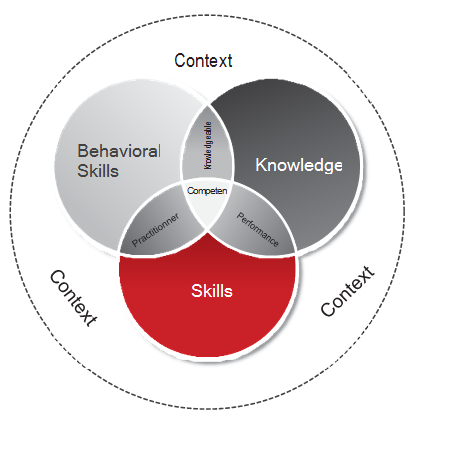
|| Clause 8: Operation
After planning the EMS, an organization must put it into operation. This clause includes:
Operational planning and control: This activity includes implementation of plans and processes that lead the organization towards meeting the environmental management system requirements. Additionally, this clause requires from organizations to establish controls in place which help in preventing any deviation from the environmental policy, objectives, and legal requirements.
After the requirements have been established, the organization should control the planned changes and review the unintended changes to mitigate any adverse effect. All the processes within the organization, including outsourced processes should be controlled.
Emergency preparedness and response: There is a specific requirement to establish an emergency preparation and response procedure to prevent environmental impacts. An effective emergency preparation and response plan can prevent the occurrence of emergency situations and accidents, and the can reduce the consequences of such events. Furthermore, clause 8.2 of ISO 14001:2015 requires from organizations to periodically test, review, and revise the emergency preparedness and response procedures.

|| Clause 9 : Performance evaluation
Once the EMS is implemented, ISO 14001 requires permanent monitoring of the system as well as periodic reviews to:
- evaluate the effectiveness of the implemented EMS
- objectively evaluate how well the minimal requirements of the standard are fulfilled
- verify the extent to which the organizational, stakeholder, and legal requirements have been met;
- review the suitability, adequacy, effectiveness and efficiency of the EMS;
- demonstrate that planning has been successfully implemented;
- assess the performance of processes;
- determine the need or opportunities for improvements within the environmental management system.
|| CLAUSE 10: IMPROVEMENT
Continual improvement can be defined as all the actions taken throughout the organization to increase effectiveness (reaching objectives) and efficiency (an optimal cost/benefit ratio) of processes and controls to bring increased benefits to the organization and its stakeholders. An organization can continually improve the effectiveness of its management system through the use of the environmental policy, objectives, and audit results, analysis of monitored events, indicators, risk analysis, corrective actions and management review.
To be effective, the management system must be maintained in a ready state that accurately reflects business requirements, procedures, organizational structure, and policies. During the continual improvement phase, the processes and procedures undergo frequent changes because of shifting business needs, technology upgrades, or new internal or external policies. Therefore, it is essential that the management system is reviewed and updated regularly as part of the organization’s change management process to ensure that new information is documented and environmental controls are revised if required.
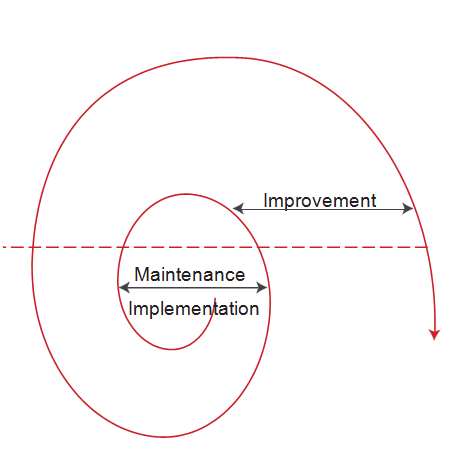
Link between ISO 14001:2015 and other standards
The ISO 14000 family of standards includes most notably the ISO 14001, and various standards such as ISO 14004, ISO 14006, ISO 14031, ISO 14044, and ISO 14063, which are used to complement ISO 14001:2015. This family of standards aims at promoting effective and efficient environmental management for organizations through the use of different tools and techniques. ISO 14004 provides guidance to organizations to support the achievement of sustained success by an environmental management approach. ISO 14006 standard provides guidelines for incorporating eco-design, whereas the ISO 14044 sets the requirements and guidelines for life cycle assessment. There is also a very strong link between ISO 14001 and ISO 14031, as this standard provides additional guidance on an effective environmental performance evaluation.
These standards are usually combined to achieve better results in improving the organizational environmental performance. There are also other standard that complement the family of ISO 14000 by offering guidance for audits, communication, labelling and life cycle analysis, and also tackling the environmental challenges.
Integration with other management systems
General requirements presented in the table below are commonly stated in any management system and relate to determining objectives, applying them according to the organization’s habits and needs, keeping them alive based on a strong management commitment, monitoring and reviewing, supporting the man- agement system by good documentation, regular ‘health-checks’ via internal or external audits and to gain benefits through continual improvement as achieved by a regular management review.
The table below shows how an EMS can be considered jointly with other management systems. This will help the organization to envision “combined audits” in order to achieve their compliance goals with adequate effort and budget.

Environmental Management – the business benefits
As with all major undertakings within an organization, it is essential to gain the support and sponsorship of executive management. By far, the best way to achieve this is to illustrate the positive gains of having an effective environmental management process in place, rather than highlighting the negative aspects of the contrary.
Today, an effective environmental management is not about being forced into taking action to address external pressures, but its importance relies on recognizing the positive value of environmental good practice being embedded throughout the organization.

The adoption of an effective environmental management process within an organization will have benefits in a number of areas, examples of which include:
- Improved organizational effectiveness and efficiency;
- Improved understanding of the business as gained through risk identification and analysis
- Operational resilience which results from implementing risk reduction
- Downtime reduction due to the identification of alternative processes and workarounds
- Protection of stakeholder value
- Increase customer and employee satisfaction;
- Improved resource management and waste reduction;
- Improved organizational culture;
- Enhanced continuous improvement;
- Process improvement; and
- Avoidance of liability actions
Implementation of an EMS with IMS2 methodology
Making the decision to implement an Environmental Management System based on ISO 14001 is often a very simple one, as the benefits are well documented. It is important to follow a structured and effective methodology to cover all the minimum requirements for the implementation of an environmental management system. Most companies now realize that it is not sufficient to implement a generic, “one size fits all” environmental management program. For an effective implementation methodology, organizations need to take into account specific risks that would impact the environmental performance. A more difficult task is the compilation of an implementation plan that balances the requirements of the standard, the business needs and the deadline to become certified.
There is no single blueprint for implementing ISO 14001 that will work for every company, but there are some common steps that will allow organizations to balance the often conflicting requirements and pre- pare for a successful certification audit. Whatever methodology used, the organization must adapt it to its particular context (requirements, size of the organization, scope, objectives, and so on).
PECB has developed a methodology for implementing a management system. It is called “Integrated Imple- mentation Methodology for Management Systems and Standards (IMS2)” and is based on applicable best practices. This methodology is based on the guidelines of ISO standards and also meets the requirements of ISO 14001.
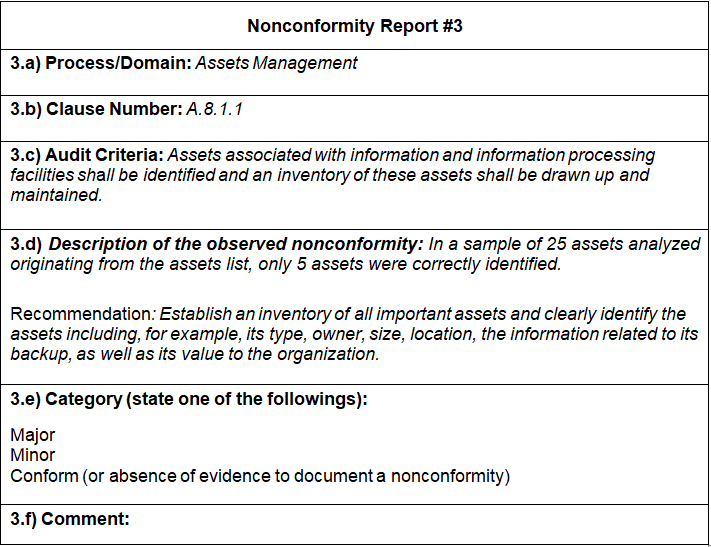
IMS2 is based on the PDCA cycle divided into four phases: Plan, Do, Check and Act. Each phase has be- tween 2 and 7 steps for a total of 18 steps. In turn, these steps are divided into 101 activities and tasks. This ‘Practical Guide’ considers the key phases in the organization’s implementation project from start to finish and suggests the appropriate ‘best practice’ for each one, while directing the organization to further helpful resources as it embarks on its ISO 14001 journey.
By following a structured and effective methodology, an organization can be sure it covers all minimum requirements for the implementation of a management system. As mentioned above, whatever methodology used, the organization must adapt it to its particular context, and not apply it like a cookbook. The key to implementation lies in a contextualized and adaptable approach by the organization, which ensures a robust outcome.
The sequence of steps required in the process may be changed (inversion, merge) to meet the most suitable outcome. For example, the implementation of the management procedure for documented information can be done before the understanding of the organization. Many processes are iterative because of the need for progressive development throughout the implementation project; for example, communication and training.

Certification of organizations
The usual path for an organization that wishes to be certified against ISO 14001 is the following:
- Implementation of the management system: Before being audited, a management system must be in operation for some time. Usually, the minimum time required by the certification bodies is 3 months.
- Internal audit and review by top management: Before a management system can be certified, it must have had at least one internal audit report and one management review.
- Selection of the certification body (registrar): Each organization can select the certification body (registrar) of its choice.
- Pre-assessment audit (optional): An organization can choose to perform a pre-audit to identify any possible gap between its current management system and the requirements of the standard.
- Stage 1 audit: A conformity review of the design of the management system. The main objective is to verify that the management system is designed to meet the requirements of the standard(s) and the objectives of the organization. It is recommended that at least some portion of the Stage 1 audit should be performed on-site at the organization’s premises.
- Stage 2 audit (On-site visit): The Stage 2 audit objective is to evaluate whether the declared management system conforms to all requirements of the standard, is actually being implemented in the organization and can support the organization in achieving its objectives. Stage 2 takes place at the site(s) of the organization’s sites(s) where the management Follow-up audit (optional): If the auditee has non-conformities that require additional audit before be- ing certified, the auditor will perform a follow-up visit to validate only the action plans linked to the non- conformities (usually one day).
- Follow-up audit (optional): If the auditee has non-conformities that require additional audit before be- ing certified, the auditor will perform a follow-up visit to validate only the action plans linked to the non- conformities (usually one day).
- Confirmation of registration: If the organization is compliant with the conditions of the standard, the Registrar confirms the registration and publishes the certificate.
- Continual improvement and surveillance audits: Once an organization is registered, surveillance activities are conducted by the Certification Body to ensure that the management system still complies with the standard. The surveillance activities must include on-site visits (at least 1 per year) that allow verifying the conformity of the certified client’s management system and can also include: investigations following a complaint, review of a website, a written request for follow-up, etc.
Training and certifications of professionals
PECB has created a training roadmap and personnel certification schemes which are strongly recommended to implementers and auditors of an organization that wish to get certified against ISO 14001. Certification of organizations is a vital component of the environmental management field as it provides evidence that organizations have developed standardized processes based on best practices. Certification of individuals serves as documented evidence of professional competency, while also providing evidence that the individual has attended one of the related courses and successfully completed exams.
Personnel certifications demonstrate that the professional holds defined competencies based on best practices. It also allows organizations to make an informed selection of employees or services based on the competencies that are represented by the certification designation. Finally, it provides incentives to the professional to constantly improve his/her skills and knowledge and serves as a tool for employers to en- sure that training and awareness has been effective.
PECB training courses are offered globally through a network of authorized training providers and they’re available in several languages and include introduction, foundation, implementer and auditor courses. The table below gives a short description about PECB’s official training courses for Environmental Management Systems based on ISO 14001:2015.

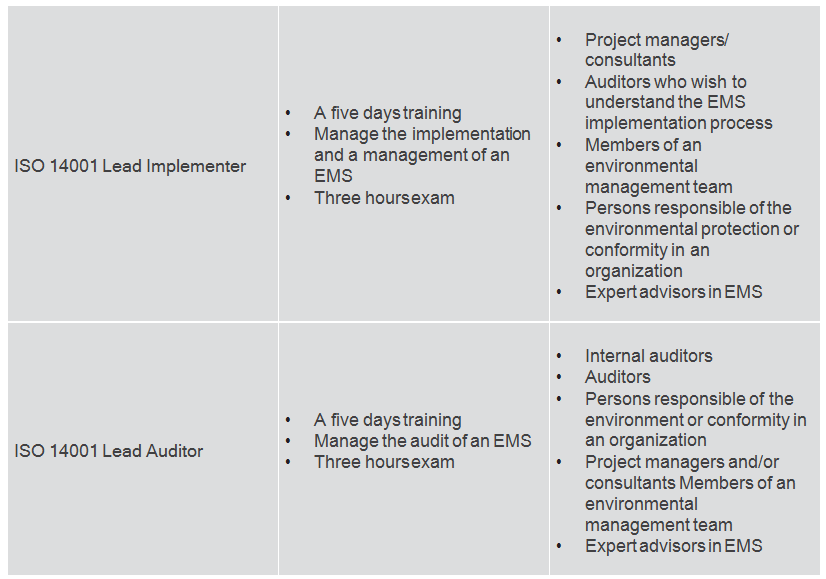
Although a specified set of courses or curriculum of study is not required as part of the certification process, the completion of a recognized PECB course or program of study will significantly enhance your chance of passing a PECB certification examination.
The list of approved organizations that offer PECB official training sessions is found at training partners section.
|| Choosing the right certification
The ISO 14001 Foundation certification is a professional certification for professionals needing to have an overall understanding of the ISO 14001 standard and its requirements.
The ISO 14001 Implementer certifications are professional certifications for professionals needing to implement an EMS and, in case of the ISO 14001 Lead Implementer Certification, needing to manage an implementation project.
The ISO 14001 Auditor certifications are credentials for professionals needing to audit an EMS and, in case of the ISO 14001 Lead Auditor Certification, needing to manage a team of auditors.
The ISO 14001 Master certification is a professional certification for professionals needing to implement an
EMS and to master the audit techniques and manage (or be part of) audit teams and audit program.
Based on the candidate’s overall professional experience and their acquired qualifications, they will be granted one or more of these certifications based on projects or audit activities they have performed in the past or on which they are currently working on.
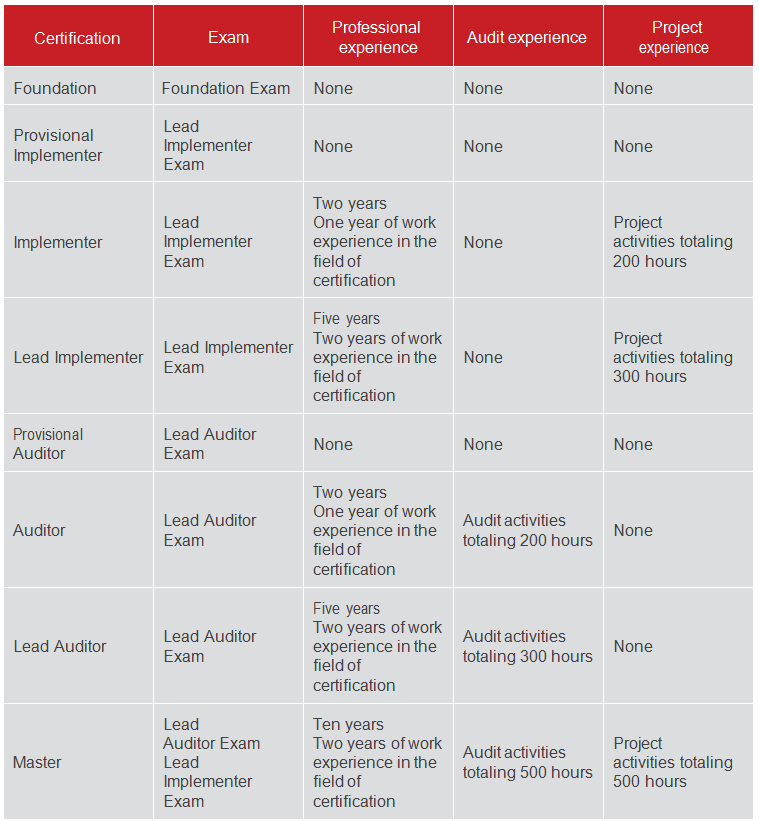
thank you for sharing – Gulvafslibning | Kurt Gulvmand with us, I conceive – Gulvafslibning | Kurt Gulvmand genuinely stands out : D. quality management system audits
ReplyDeleteThat's interesting! Can you please share more about it? Thank you.
ReplyDeleteISO 14001 Certification
It is really very helpful for us and I have gathered some important information from this blog.
ReplyDeleteISO 14001 Certification
Nice Post and liked it
ReplyDeleteTo know more about ISO 14001 Standards, please visit
An introduction to ISO 14001 Standard
Great post.I'm glad to see people are still interested of Article.Thank you for an interesting read........
ReplyDeleteISO 9001 Lead Auditor Course
Useful blog which has all the information about ISO 14001 certificates and process
ReplyDeleteISO 14001 Certification
The information on this blog is very useful and very interesting
ReplyDeleteISO 14001 Certification
Thank you for putting an effort to published this article. You've done a great job! Good bless!
ReplyDeleteISO 14001 Certification Brazil
We have garnered some easy tips and tricks that can add more value to you...
ReplyDeleteISO 14001 Certification body
I accept there are numerous more pleasurable open doors ahead for people that took a gander at your site.
ReplyDeleteISO 14001 Certification Dubai
Great post.I'm glad to see people are still interested of Article.Thank you for an interesting read.......
ReplyDeleteiso 14000 lead auditor training
Thanks for the information. Hope devotes will be careful after reading this post. Regards
ReplyDeleteISO 14001 Lead Auditor Training Online
ISO 14001 Lead Auditor Course
ReplyDeleteThanks for sharing this great content. It is really informative and useful., You can also check this Similar site ISO Lead Auditor Training
ReplyDeleteISO 14001 Lead Auditor Course
ReplyDeleteISO 14000 é uma série de normas desenvolvidas pela International Organization for Standardization (ISO) que estabelecem diretrizes sobre a área de gestão ambiental dentro de empresas.
ReplyDeleteComitê de criação
No ano de 1993, a ISO reuniu diversos profissionais e criou um comitê, intitulado Comitê Técnico TC 207 que teria como objetivo desenvolver lista atualizada de normas da série ABNT NBR ISO 14000 nas seguintes áreas envolvidas com o meio ambiente. O comitê foi dividido em vários subcomitês, conforme descritos.
Os impactos ambientais gerados pelo desenvolvimento industrial e econômico do mundo atual constituem um grande problema para autoridades e organizações ambientais.
No início da década de 1990, a ISO viu a necessidade de se desenvolverem normas que falassem da questão ambiental e tivessem como intuito a padronização dos processos de empresas que utilizassem recursos tirados da natureza e/ou causassem algum dano ambiental decorrente de suas atividades.
Comitê de criação
No ano de 1993, a ISO reuniu diversos profissionais e criou um comitê, intitulado Comitê Técnico TC 207 que teria como objetivo desenvolver lista atualizada de normas da série ABNT NBR ISO 14000 nas seguintes áreas envolvidas com o meio ambiente. O comitê foi dividido em vários subcomitês, conforme descritos.
Thanks for sharing this great content. It is really informative and useful., You can also check this Similar site ISO 14001:2015 Lead Auditor Training
ReplyDeleteGreat blog with great information .... ISO 14000 Certification in Oman|
ReplyDeleteThis post is really good and blog is very interesting. There are good details. Thank you for sharing….iso 9001 lead auditor course in india
ReplyDeleteThanks for sharing this great content. It is really informative and useful. You can also check this Similar site for ISO 14001
ReplyDeleteWonderful Post!really very helpful. Interested to know more on ISO 14001 Lead Auditor Training
ReplyDeletevery informative.
ReplyDeleteISO 14001 Anforderungen
Awesome! Amazing list of blog thanks you so much for sharing this awesome piece I always love to read. this is really helpful to us
ReplyDeleteđào tạo iso
your post so nice and very informative post thanks for sharing this post
ReplyDeleteThanks for sharing this great content.
ReplyDeletepelatihan iso 14001
good blog post!!!!
ReplyDeleteISO 14001 Internal Auditor Training in Morocco
curso de auditor líder ISO 14001
ReplyDeleteNice!! and your way of writing content is good and I'd recommend you to write the blogs with the same passion. Also, this iso 14001 certification in india is good for all the companies with lots of positivity.
ReplyDeleteThanks for the post iso 14001 environmental management
ReplyDelete